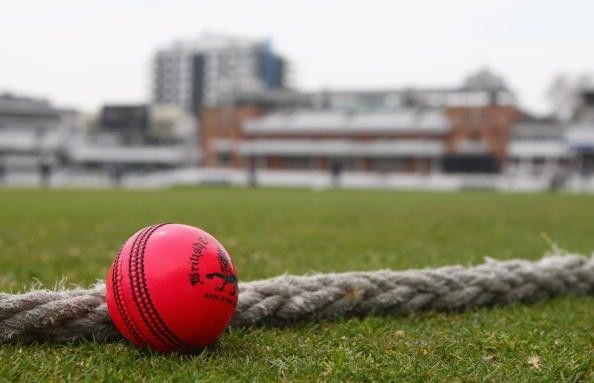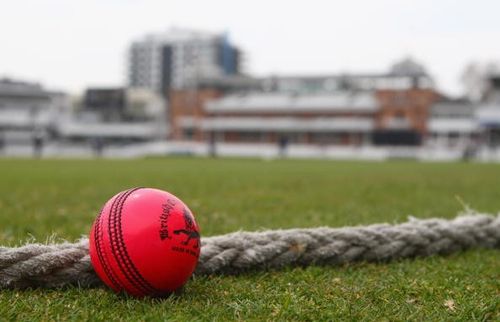
A risk worth taking or a probable disaster - The Day/Night Test
Test Cricket, that which we boast of as the ethereally beautiful traditional format of the game, is foreseen to undergo some precarious experimentation when Australia and New Zealand lock horns in the first ever Day & Night Test match which kicks off on the 27th November at Adelaide. One can’t help but feel sorry for the probable not-so-lucky fans who will be missing out on witnessing history unfold at the Adelaide Oval.
138 years have whisked away in a canter since Alfred Shaw of England belted down the first ever delivery to Charles Bannerman of Australia in the first ever Test Match in 1877. It’s amazing how time speeds away and we don’t even realise it.
Bright sunlight beating down on the ground, with the shine of the pitch rubbing itself off on the entire circumference of the stadium; a somber overcast condition and a mild cold breeze calmly making its way through the playing arena along with a dew-drenched lush green outfield - two of the iconic sights we can think of from the time before play commences on each day of a Test Match, with the players getting themselves warmed up for the battle.
For a change, the situation certainly will be slightly different at Adelaide, if not a whole lot. It will be at 1400 local time, converting to 0900 IST, when the match is scheduled to get on its way. The Day-Night Test Match along with a cup of hot morning tea is more than enough to light up the day for an ardent Indian cricket fanatic.
Evaluating what Day/Night matches can do for Test cricket
Changes are always welcome, but is this change worth welcoming? Some say that it’s a much-needed medicine that need to be injected for the sake of popularizing the game while some are against any kind of tampering with the game’s oldest format. All the answers to the queries, questions and doubts will be unlocked after the conclusion of the 3rd Test match of the Trans-Tasman series.
The Day-Night Test match is knocking on the door, with the Pink Ball taking baby steps of going through the rigours of Test Cricket. Let’s throw some light and make a small introduction of the Pink Ball which first came into existence in a cancer charity event.
In 2007, the Marylebone Cricket Club (MCC) contemplated the idea of Day-Night Test. The journey took off with the venture of selecting the most appropriate colour of the ball, and in the end the MCC zeroed in on the Pink Ball.
It took five years since then to substantiate the most fitting shade of pink. Green stitching is currently been used for manufacturing of the balls. White stitching was also used, but the fielders complained about not seeing the ball clearly on discolouring of the ball.
It has been nine years since the Pink Ball got introduced. A lot of things will come under the scanner and will be scrutinized the moment the Test match commences. Experts’ opinions, match previews and reviews will come flooding in. Some of the probable aspects that will surely come into the fore:
The sight-screen: A big aid for the batsman. Dark red cherry against a white sight-screen in Test Matches and the white ball against black sightscreens in ODI’s- the colour contrast between the ball and sight-screen is of high priority. Pink Kookaburra balls will be used during the matches. Darker the shade of the pink, the brighter should be the sight-screen and vice-versa. Batsman picks the ball from the bowler’s arm and no compromises can be afforded from the batsman’s point of view.
The visibility of the ball under lights: The darker the ball the harder it is to detect it under lights. It’s the main reason why the umpires call off a day’s play in a Test Match when the floodlights take over the natural lights. James Sutherland, the current CEO of Cricket Australia, reckons it to be a good move and this was said after conducting several trials.
The selection of proper stadiums: During one of the Sheffield Shield matches last year, question marks were raised regarding visibility of the balls at the Woolloongabba Stadium in Brisbane and, as a result, it automatically missed out on being a probable contender to host the Test Match.
The Boxing Day and New Year’s Test matches are traditionally played at the year end and earn huge revenues for Cricket Australia and, therefore, an experimentation won’t be feasible. Due to the two and hour time difference, Perth also doesn’t quite fit in as a suitable venue. That leaves us with Hobart and Adelaide and it’s a no-brainer that Adelaide is the eventual venue for the inaugural Day-Night Test Match.
This was the Australian reason for why the match will be held at Adelaide. Likewise, different test playing venues have their own pros and cons for their selection criteria of stadiums. The height and intensity of the floodlights will also come into the fore especially when the ball sails up high in the air for the fielder to catch hold of it.
The swing and spin factor: Two characteristics of bowling, which if removed, will squeeze out all the fizz from the art of bowling. There won’t be any difference left between bowling machines and the actual bowlers. The normal Kookaburra ball retains its seam and swings for a longer duration. Australian conditions rarely favour spin bowling and, therefore, the spin factor of the ball will hardly come into play. It will be interesting to see how the Pink Kookaburra ball behaves.
The broader aspect is that if Day-Night Cricket goes across the world, then it will be interesting to see how one comes up with the Pink S.G balls in the sub-continent conditions and the Pink Duke balls in U.K conditions.
Summing up the lengthy analysis of the hyped “Pink Ball Day-Night Test Match”, it can only be interpreted that there may be millions of permutations and combinations regarding all the mysteries involving the Adelaide match, but none can beat the excitement of the Trans-Tasman contest that is destined to write a new chapter of the evergreen format of the game, which we popularly, boastfully and proudly refer to as Test Cricket.
